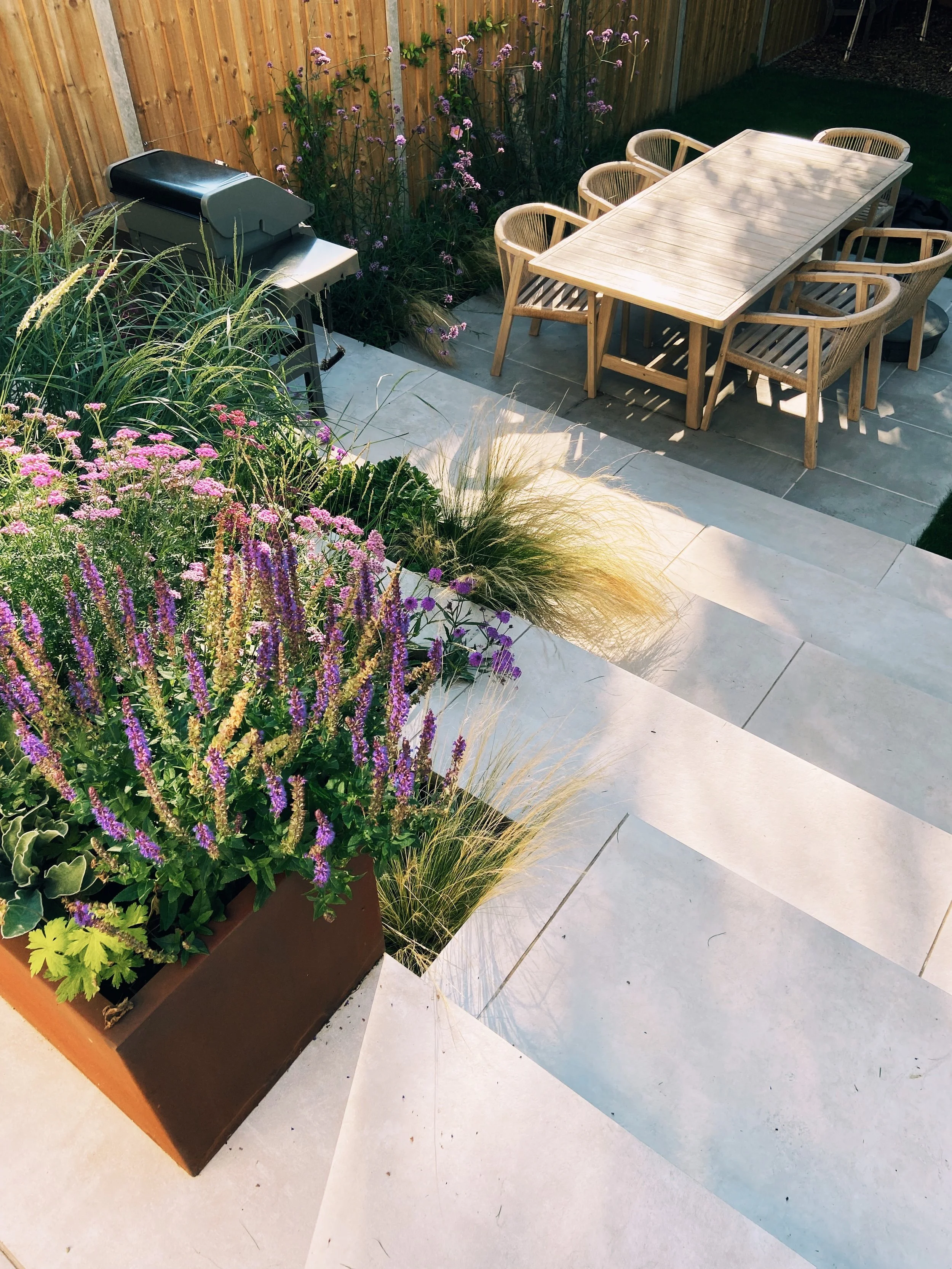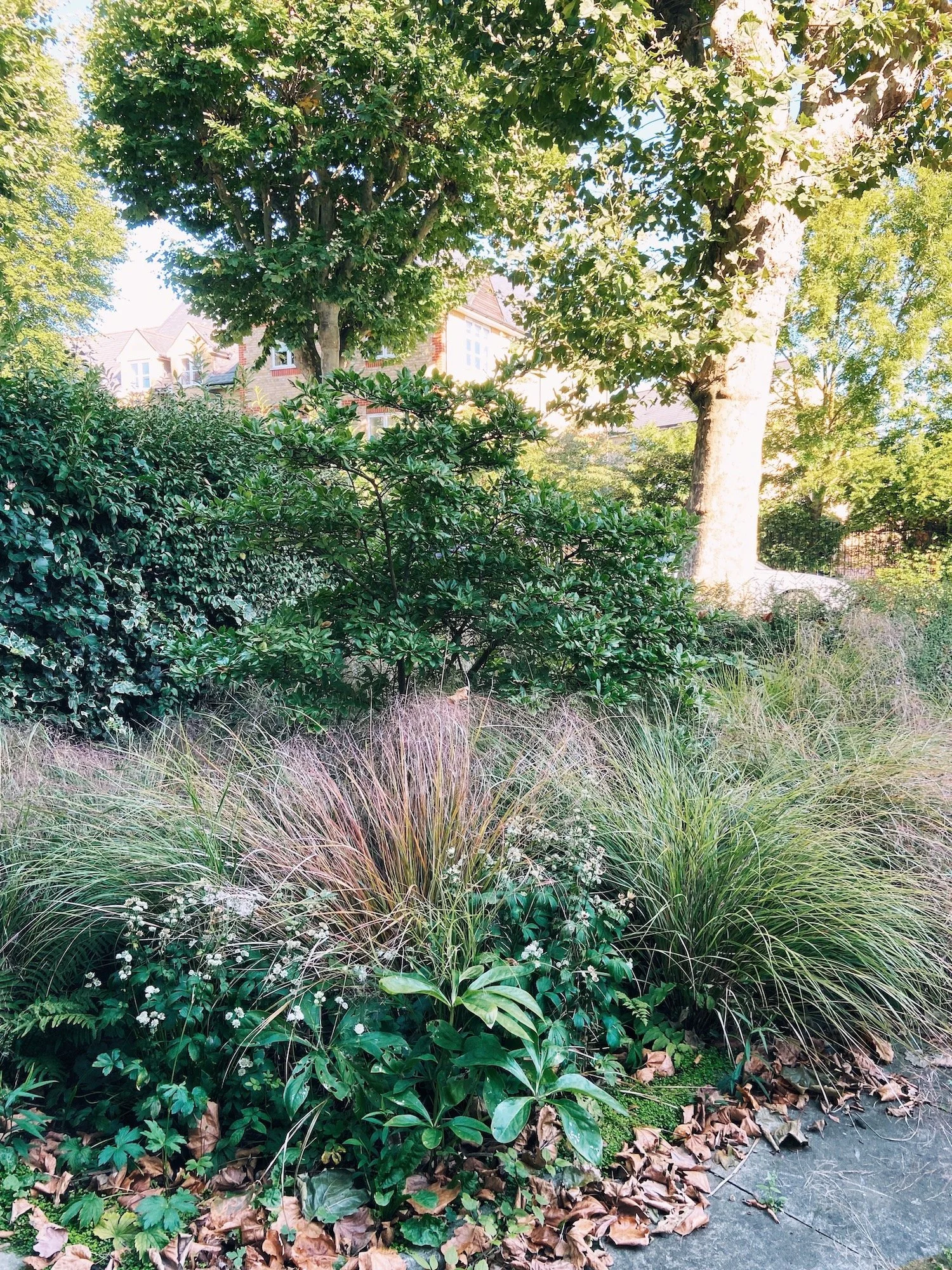Dry garden design in the UK
This garden designed by me, Melanie Hick, in London features low-water plants like Saliva, Achillea and Nacella tenuissima. This planting combination is contrasting in colour and texture - a combination you can plant in your dry garden.
Dry garden design is a well-known notion in places we traditionally think of as hot, sunny and dry. The Mediterranean, parts of Australia, California and South Africa have a history of being just those kinds of places.
With a changing climate and hotter, drier summers, we should now begin to adapt to dry garden design in the UK. If we start to put low-water thinking in place now, as opposed to clinging on to thirsty plants of old, we may be able to have beautiful, sustainable gardens even through hose pipe bans and water restrictions.
Here are four things to consider if you want a beautiful dry garden design in the UK.
Soil and growing medium
Most mediterranean plants do not want their feet wet. They want free-draining, low nutrient soil. Australian plants that live in the drier areas want low phosphorous. That means no Miracle Grow or the like. You can see how these plants grow for yourself by visiting areas like the slopes of Mount Vesuvius, the coast around Melbourne and the hills behind Marbella to see that the soil the local plants grow in is free-draining, not at all lush and brown, and actually sometimes quite rocky.
When nutrients and moisture are low down in this soil, the plants have to develop long root systems to reach what they need, which in turn makes them better at surviving dry spells that plants with roots near the surface.
The soil profile in this Australian coastal scene is rock, sand and barely any top soil. The plants all have thin, small, fragrant leaves and papery bark.
Plant adaptations
If you do take a trip to one of the beautiful, sunny places mentioned, keep your eyes peeled for one of the keys to dry garden design, the way a plant has developed aka plant adaptations.
Adaptations means the way a plant grows, looks and behaves. The plants that will thrive in these hot dry conditions will generally have smaller leaves, a greyish look and may even be fragrant. These are adaptations that mean that they have less surface area to lose precious water from, are protected from evaporation, drying winds and insect attack. Think about the leaf of a rosemary bush. Thin, tough leaves, fragrant oil and a silvery underside. That is a great example of a plant that is adapted to survive. Even the stems of this plant are tough and have a protective layer of lightly peeling bark, in stark contrast to a water-loving plant like a hydrangea.
Succulents are not just house plants, they’re drought-lovers in their natural habitat, because they store water up for the bad times.
The succulents grow outdoors in zones without frost, capturing water in their leaves and stems and avoiding dehydration with a waxy grey layer.
Watering
Watering, yes, watering is essential for a dry garden. We are talking here about dry garden design, not an experiment in how to kill off a huge investment in plants. Even in places where it’s dry, it will rain. Sometimes that rain comes in a huge deluge, and that’s what I want you to think about when you’re planning watering or irrigation. Really soak your plants before the sun is high in the sky to encourage their roots to go deep to find water. A light sprinkle from the hose only encourages root growth near the surface, and when the soil gets hot, the plants won’t survive well.
A land of drought and flooding rain still gets water at some point.
Planting combinations
So far, so very sensible. But what about beautiful too? A combination of interesting gravel as a mulch or growing medium, a soft greeny grey leaf, a wisp of gold grass and a small purple flower are a few beautiful elements you could have in a dry garden design.
Consider this equation for some planting maths:
long thin + gold + grey + soft green + colour => beauty
Team translucent golden grasses with oval-leaved grey shrubs and some flowering plants and you have a pleasing planting scheme that makes for a low-water scheme that rewards the eye too.
This dry front garden is only watered in the hottest weather and include long ovate leaves, thin grasses, palmate leaves, gold and red colours and white bracts.
Book your free call to have a fully bespoke dry garden design developed for you.





